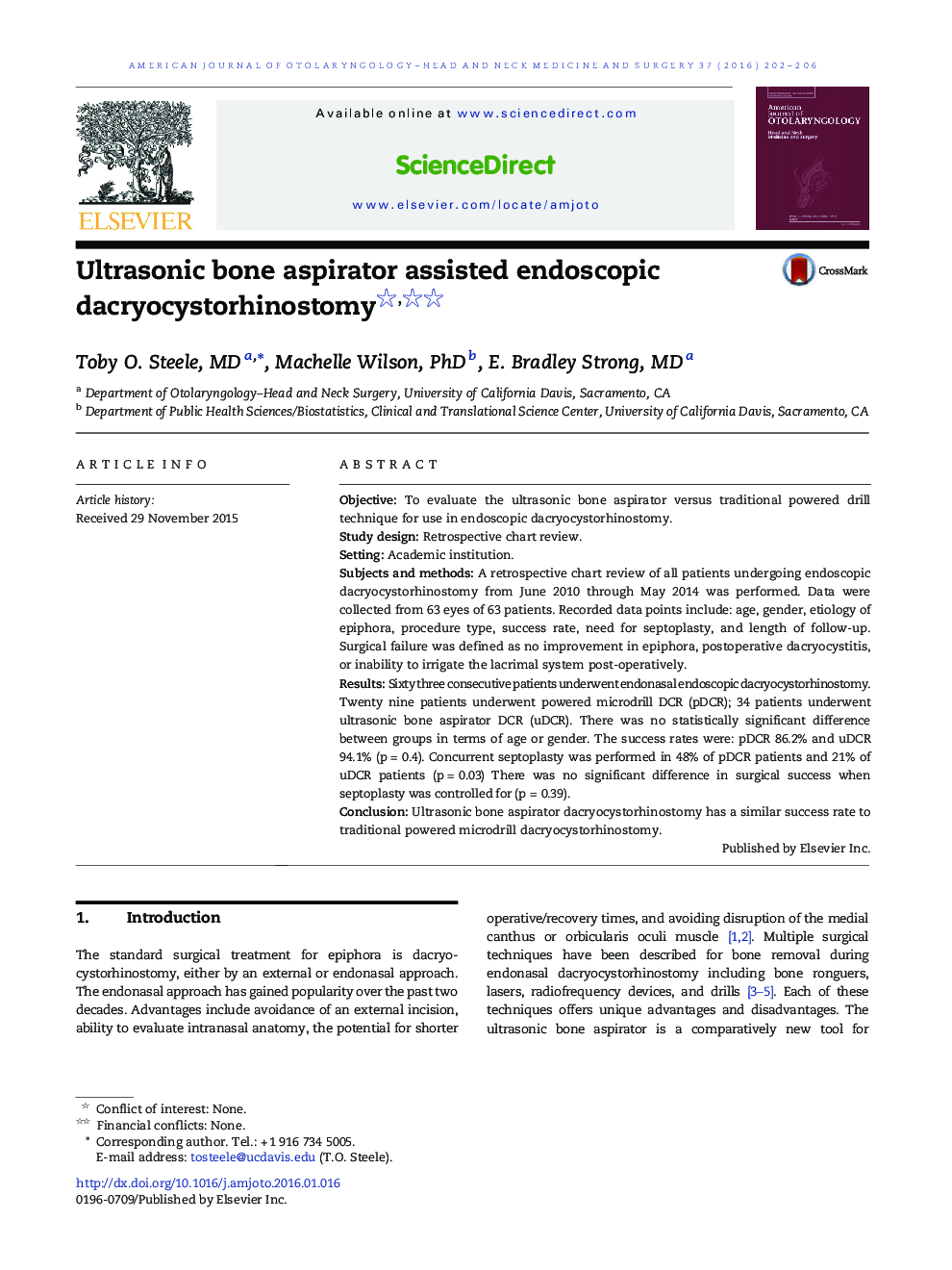| Article ID | Journal | Published Year | Pages | File Type |
|---|---|---|---|---|
| 4103024 | American Journal of Otolaryngology | 2016 | 5 Pages |
ObjectiveTo evaluate the ultrasonic bone aspirator versus traditional powered drill technique for use in endoscopic dacryocystorhinostomy.Study designRetrospective chart review.SettingAcademic institution.Subjects and methodsA retrospective chart review of all patients undergoing endoscopic dacryocystorhinostomy from June 2010 through May 2014 was performed. Data were collected from 63 eyes of 63 patients. Recorded data points include: age, gender, etiology of epiphora, procedure type, success rate, need for septoplasty, and length of follow-up. Surgical failure was defined as no improvement in epiphora, postoperative dacryocystitis, or inability to irrigate the lacrimal system post-operatively.ResultsSixty three consecutive patients underwent endonasal endoscopic dacryocystorhinostomy. Twenty nine patients underwent powered microdrill DCR (pDCR); 34 patients underwent ultrasonic bone aspirator DCR (uDCR). There was no statistically significant difference between groups in terms of age or gender. The success rates were: pDCR 86.2% and uDCR 94.1% (p = 0.4). Concurrent septoplasty was performed in 48% of pDCR patients and 21% of uDCR patients (p = 0.03) There was no significant difference in surgical success when septoplasty was controlled for (p = 0.39).ConclusionUltrasonic bone aspirator dacryocystorhinostomy has a similar success rate to traditional powered microdrill dacryocystorhinostomy.
